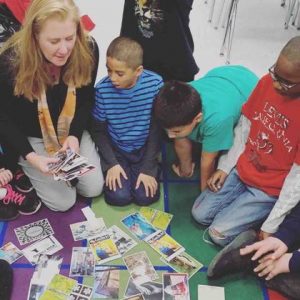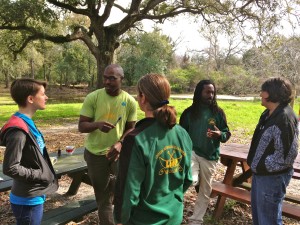Apr 06, 2014 Choice, Control, and a Sense of Ownership
Excerpt from the Inspired Educator, Inspired Learner • By Jennifer Stanchfield
Ownership and Buy In
 One of the tenets of experiential education is that people learn best when they perceive a sense of control, and have choice and ownership in their learning experiences. Think about creating opportunities that build this sense of choice and control for participants or students from the very beginning of the program or school year. Empowering learners to set reasonable parameters around their participation creates an atmosphere of healthy trust and will increase involvement from reluctant participants.
One of the tenets of experiential education is that people learn best when they perceive a sense of control, and have choice and ownership in their learning experiences. Think about creating opportunities that build this sense of choice and control for participants or students from the very beginning of the program or school year. Empowering learners to set reasonable parameters around their participation creates an atmosphere of healthy trust and will increase involvement from reluctant participants.
Create opportunities for participants to make choices within an experience. Consider some of the following techniques:
• Add rules to an icebreaker that allow the “it” person a way out or an option to participate at their own pace.
• Invite participants to volunteer rather than calling on them to share.
• Allow participants to pass during group discussion.
• Help learners understand the purpose of the activity and why the lesson is relevant and useful to them.
• Make time for both the teacher/leader and students/participants to share their expectations, requests and goals for the class or lesson and regularly check in throughout.
Involving Reluctant Group Members
 • Find something that will intrinsically motivate group members and increase buy-in. Some people will jump at the opportunity to help set up equipment or be involved in some supportive role such as group photographer.
• Find something that will intrinsically motivate group members and increase buy-in. Some people will jump at the opportunity to help set up equipment or be involved in some supportive role such as group photographer.
• Focus on positive participation. Give those who are opting out the opportunity to participate passively or in an alternative way (that does not mean distracting the group). Once you draw a critical mass into the group activities, more will follow.
• A successful educator has flexible expectations. Remember that sometimes it is appropriate to acknowledge the need for taking “baby steps.” Group work is a process, not an event. It is a practice. Learning to play and be part of a group often takes practice. In working with youth, I have discovered that some actually never learned how to play and that many students are not used to working in groups at all.
• Recognize that people learn and are more comfortable interacting in different ways.
• It is essential to differentiate the way you present material and engage group learners. Take brain research into account and design lessons that use multiple senses and involve movement and social interaction. Activities that use different senses and require different skill sets will reach more students and increase attention and retention and create multiple neural pathways to learning.
• Keep it interesting: Props, humor, and relating activities to popular culture are useful strategies for increasing involvement.
• Use peers as role models and leaders where appropriate.
Many times participants who were hesitant, resistant, or “too cool for school” at the beginning of an activity or program eventually become the star of the show. Over and over, I see learners who did not engage in class or perform well in previous group situations excel in experientially-based group work. This is especially evident when they feel empowered by having choices about their participation and are motivated by intriguing challenges. Allow participants to sit out of an activity as long as they are passively involved by observing. You might ask them to be the photographer or note taker during the activity. I have found that giving participants this control and choice empowers them to eventually join in despite themselves! It seems that it is harder to sit and watch peers enjoy an engaging activity than to join in.
Some reluctant participants are attracted by the offer of helping with equipment, or by the possibility of being “judge” during a game. In my programs some of the students who were initially the most reluctant and resistant in the past are now the students volunteering to facilitate in extracurricular programs with younger students. I couldn’t count the times I have heard teachers/group leaders say something like, “I can’t believe how well he participated on the challenge course today; he is never like that in class.” or “She never talks in class; I couldn’t believe she actually led that activity!” The lasting lesson for facilitators is to find ways to help participants and group leaders transfer these successes back to day-to-day participation in school, work, or other life activities.
Reference:
Stanchfield, Jennifer (2014) The Inspired Educator, The Inspired Learner. Bethany, OK Wood N Barnes Publishing Co.



mike cardus
Posted at 03:57h, 07 AprilHaving choice is a learning tool that works. My practice has change so much when I ask, “how can the experience supply choices?” … The root of experiential learning is choice and self-directedness, not a series of contrived activities.